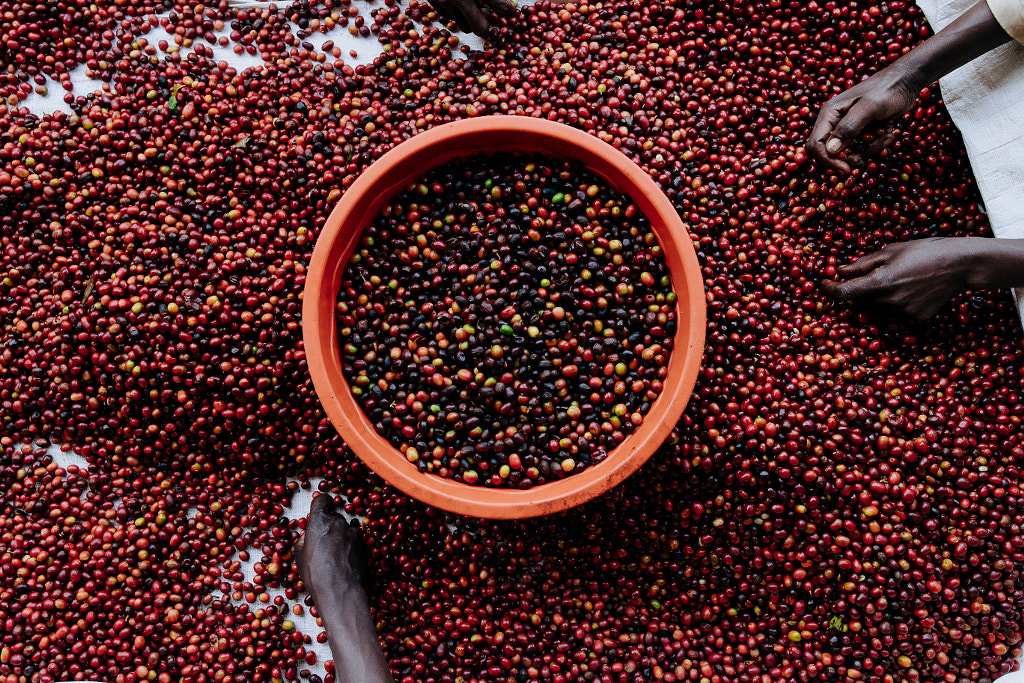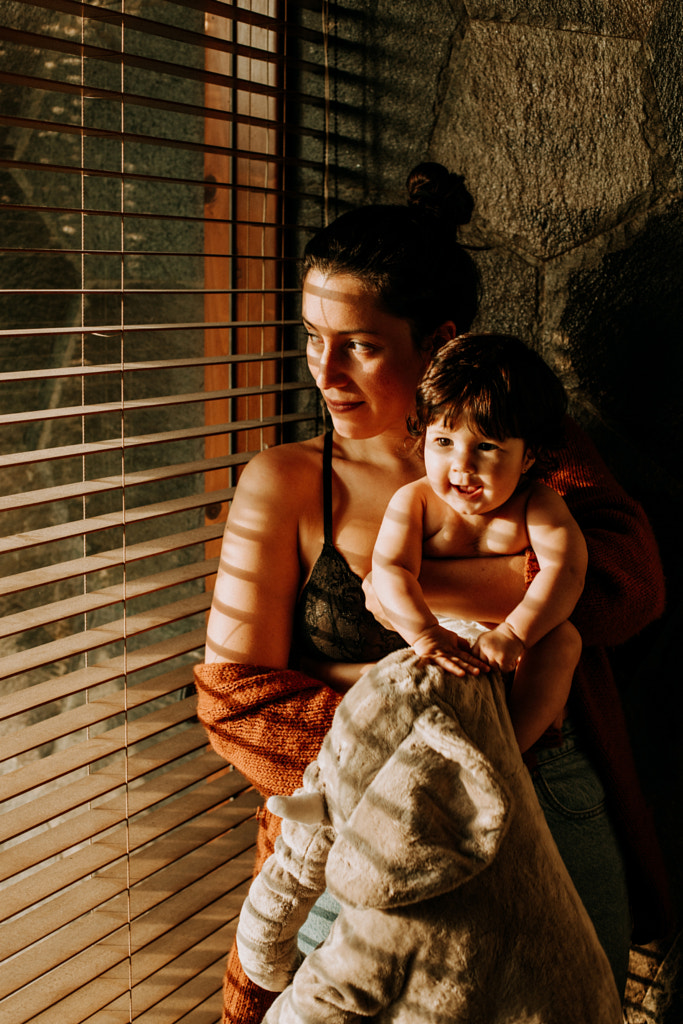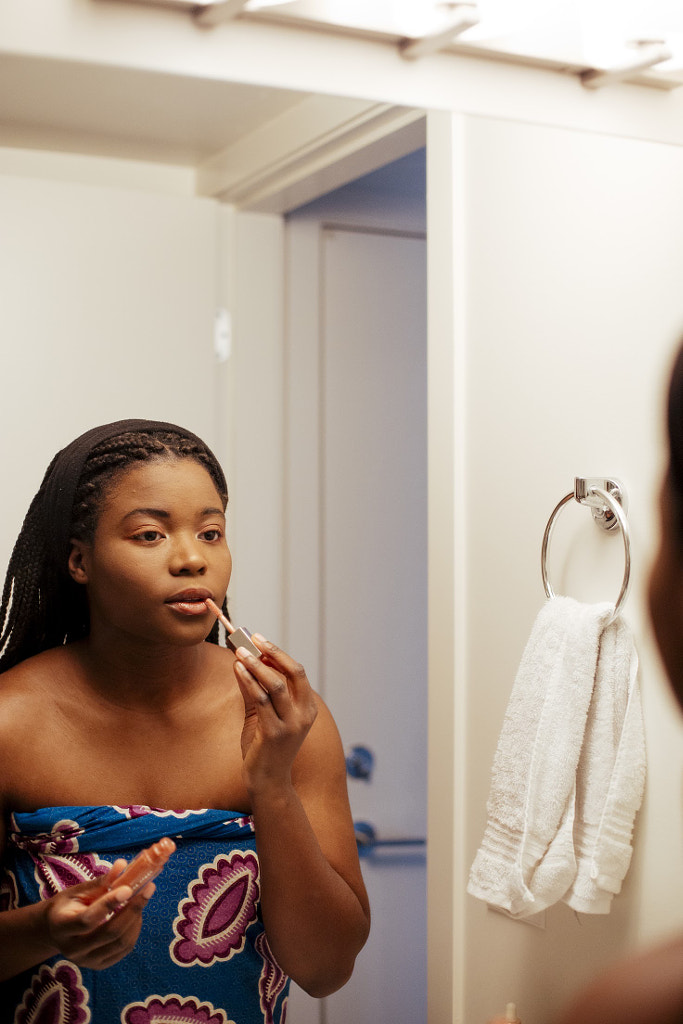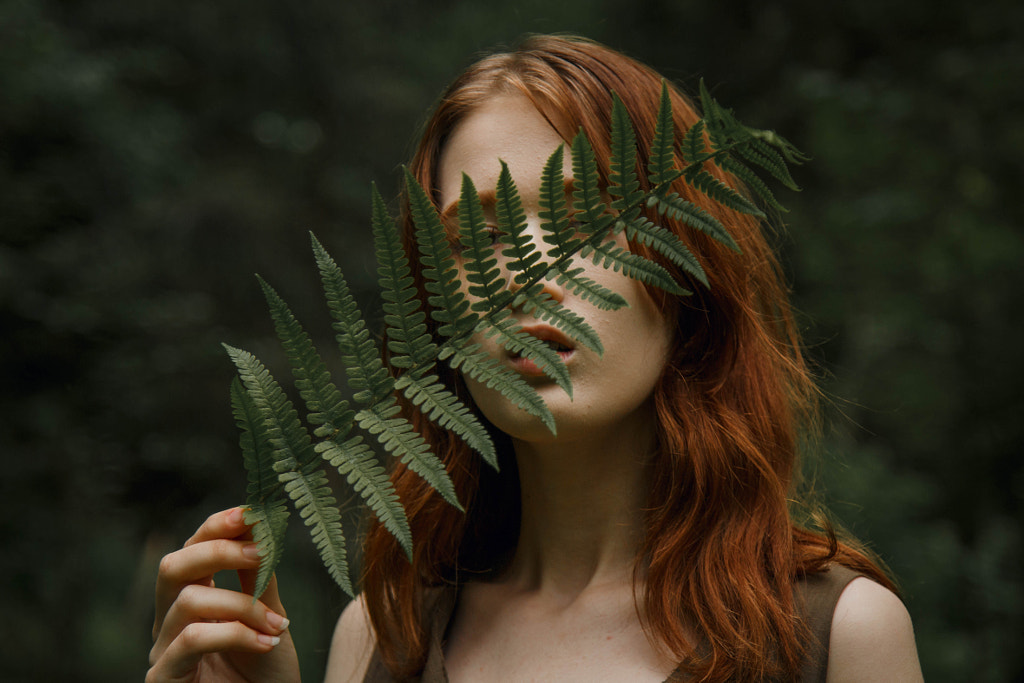As part of a recent study, Venngage reached out to thousands of marketers to get a better understanding of how they use visuals in their campaigns. Of the 200 content marketers to participate in the study, a 40% majority said they used stock photos most frequently. In our content-rich world, stock photos can be found everywhere, from subway cars, magazines, and billboards to social media, blogs, and book covers.
For image-buyers, stock photography offers a fast, convenient, and high-quality alternative to a commissioned photoshoot. For photographers, licensing their work as stock opens the door to earning passive income, diversifying their portfolios, and gaining international exposure. Here, we’ve compiled the ultimate guide for getting started; for more details and tips, be sure to browse the articles linked below, and check out the example photos we’ve highlighted.
What is stock photography?
Stock photography has been around for almost a century, but it came into its own in the digital age, as the demand for high-quality photos rose, and more photographers around the world started to contribute their work.
Here’s how it works: photographers submit their images to an agency or distributor, who then approves the images, adds them to their collection, and sells them to buyers. Stock photography can be licensed by brands, graphic designers, advertisers, business owners, and many more.
You might hear stock photography classed into three categories: macrostock, midstock, or microstock. Macrostock, or traditional stock photography, tends to be more expensive because it’s exclusive; that is, buyers pay more for the sole right to use the photos. Midstock prices fall somewhere in the middle, and microstock is relatively inexpensive.
Because microstock isn’t as exclusive, microstock photographers can sell the same images over and over again. In other words, the payments are lower, but they can add up over time. Non-exclusive, royalty-free stock photos are popular among buyers because they’re quick and affordable. The client can use the image multiple times, and copyright remains with the photographer.
Also read: (Almost) everything you’ve ever wanted to know about Licensing
What are the different types of stock photography?
Stock photography usually falls into one of two categories: commercial or editorial. As its name suggests, commercial or “creative” photography can be licensed for use in advertising campaigns, marketing materials, or the promotion of a product or service.
Editorial photography, on the other hand, cannot be used to sell a product or promote a business. It can be used by newspapers and media outlets for educational or journalistic purposes. Publications like The Guardian or The New York Times regularly use editorial stock photographs to illustrate breaking news and other timely events.
For this piece, we will focus primarily on commercial/creative stock photography because it tends to have a larger market and the potential for more sales. Because it can be used to sell or advertise, this kind of stock photography also comes with some added requirements, mostly in the form of model and property releases.
Also read: Understanding the differences between commercial & editorial photography
What are model and property releases, and why do they matter?
Releases are contractual documents that protect the photographer, the agency, and the buyer from any potential issues down the road. By signing a model or property release, the people in your photos (or the owners of the property in your photos), give their consent for their likeness to be used commercially down the line.
Without them, any pictures of recognizable people and property (even some surprising cases) can’t be sold as creative stock photography. Keep in mind that property includes intellectual property, such as works of art and branded details and logos, which might be impossible to get released and are therefore best avoided.
500px has model releases and property releases you can print, and popular apps like Releases and Easy Release make it easy to get them signed on-the-go using just a phone or tablet.
Also read: 13 things you might not know about model and property releases
How can you sell your photography on 500px?
500px works with two of the biggest names in the business—Getty Images and VCG (Visual China Group)—to distribute and license its photos. You can submit your images for consideration during the uploading process, and, if it fits the requirements and has commercial appeal, the 500px Content Team will approve it for Licensing.
You can check your Licensing Manager for updates on whether your photos have been accepted or if they need any changes. If your photo is declined, they’ll let you know why, so you can get your work approved next time. Anyone can submit their images for free. If you choose to license photos exclusively through 500px, you’ll get 60% of the amount they receive from their distribution partner.
Also read: Why you should consider submitting your photos exclusively to 500px
Why should you license your work?
The potential to earn passive income might be the primary draw of stock photography, but it’s also a great way to enter the business and get a feel for how the industry works. 500px regularly puts out trend reports and Licensing Quests to help you keep your finger on the pulse of commercial photography and get you in the habit of working with models and shooting for clients.
You can create stock photography on your own time and build a solid portfolio to show clients as you go. You’ll also have access to feedback from other artists and Contributors and get a feel for what kind of work sells. There are countless platforms for showcasing your work online, but Licensing allows you to monetize it at the same time.
Also read: 7 pros of submitting your photos to 500px Licensing
How has stock photography evolved in recent years?
As more photographers enter the market, the quality of stock photography has continued to rise. These days, brands strive for transparency and authenticity, so lifestyle photos that feel relatable are in high-demand. Today’s stock photography has moved away from posed and staged images and towards candid, everyday moments featuring real people.
Cultural movements like inclusivity, sustainability, social responsibility, technology, and wellness have also shaped the world of commercial photography. Brands are looking for work that feels unique, inspired, and original, often with a local or personal twist.
Some evergreen subjects include family photoshoots, health and wellness, food, nature, and travel. Of course, there will always be a demand for natural lifestyle, business, and office images. These topics are already well-covered, so finding a unique area or niche within the genre of your choice is your best bet. It can be a local angle on food culture or a new niche within the wellness field, but topic-selling images tend to fill a demand that hasn’t yet been saturated.
Also read: What commercial stock photography looks like in 2020
What gear do you need for stock photography?
Commercial photography was once limited to those who could afford an expensive DSLR, and while many stock photographers continue to use top-notch gear, some are branching out into mobile photography.
The old rule holds true: the best camera is the one you have with you. Sure, a DSLR with a collection of different lenses might be ideal, but you don’t need to wait until you have the equipment of your dreams to start shooting and submitting.
In terms of studio space, use what you have. You can use your kitchen counter for food shoots or your living room for a lifestyle session. Enlist friends and family to be your models, or trade time for prints with local businesses in exchange for a signed property release.
You can rent any accessories you need, or try a DIY solution for professional-looking lighting. Props and clothing can be found at second-hand stores and in models’ personal collections. A digital asset management tool like Adobe Lightroom can also be a game-changer when editing and organizing hundreds of photos for submission.
Also read: How to shoot the best stock photos for Licensing on a budget
How can I make my photos more visible to buyers?
Once your photos are accepted for Licensing, they’ll become available to hundreds of thousands of potential buyers; Getty Images alone has more than a million customers. The secret to getting noticed lies in your titles and metadata, including any relevant keywords you apply to your images.
Good stock photo titles are descriptive and straightforward, and great keywords are thorough and specific. For more visibility, remember to include both literal keywords that describe the subject of the photo and conceptual ones that describe the theme or mood at its center. Accurate titles, descriptions, and keywords help your work surface for the right buyers.
Also read: How to boost your searchability and ultimately your sales potential
What are the elements of good stock photography?
As we mentioned, good stock photos are images we can relate to; for that reason, they often feature real people in authentic, everyday settings. Look for natural emotions and candid expressions.
In addition to being relatable, good stock photography is versatile in the sense that it could be used by multiple clients in a number of different contexts. Make sure your idea and concept are clear and relevant to brands who are looking for creative, aspirational photos for their campaigns.
In terms of composition, good stock photos tend to be croppable, with plenty of copy space for buyers to add text or logos. They’re usually simple and straightforward. They have clean, natural colors and avoid any artificial or extreme filters. Ideally, they can be integrated into any template or format the buyer wants. Simple, timeless clothing without logos works best.
Good stock photography is also timely or seasonal. As we’ve seen, there’s recently been a huge demand for lifestyle images related to the global pandemic, including pictures of handwashing, wellness, and self-care. Buyers also need photos that reflect our current reality and speak to themes like video-chatting and working from home.
Some events are hard to predict, but we recommend putting together a Licensing calendar to keep track of timely or seasonal topics. For example, advertisers will start looking for images to use in their holiday promotions months before December, so get those uploaded in advance.
Similarly, you can shoot some summer vacation themed photos in spring so that travel agencies have time to download and use them in their marketing. If there’s a local festival, holiday, or event in your area, go ahead and cover it (and get those model releases signed). There’s always a surge in demand for these kinds of images when the time rolls around.
Also read: 8 easy ways to make your photos more marketable
What are some recent stock photography trends?
In the past few years, we’ve experienced a wave of stock photography trends, from zine-inspired collage to the return of the double exposure. Trends come and go, so the best way to keep track is by following the 500px blog. Every month, Karen Biilmann, Senior Art Director at 500px, releases a “What’s trending in Licensing?” report, based on what customers want in real-time. Some recent themes include connecting online, experience tech, slow travel, and saving the ocean.
Getty Images highlights timely topics like sustainability, vegan food, back-to-nature, and more as part of their trend reports, along with aesthetic elements such as the return of the flash. As for colors, yellow is “in vogue,” and warmly lit interiors are too.
In commercial stock photography, themes like “women in sport” are breaking down barriers and stereotypes while promoting equality, and customers are continuing to push for diversity in the companies they support. All of these insights speak to a need for honest, inclusive images that inspire trust, and that’s more than a trend–it’s a movement that’s here to stay.
What tips do we have for emerging stock photographers?
Our biggest tip is to approach stock photography as a business. The more thought, research, and planning you put into your photos, the better their commercial potential will be. Keep track of those trend reports, and think about how you can incorporate Licensing into shoots you already have planned.
Put yourself in the buyers’ shoes; think about what topics or messages they’re interested in illustrating, and then execute them. Study real-life advertising from brands you admire.
Find a workflow that works for you. Share your mood boards and shot lists with models and collaborators; keep your releases in one place, and develop a system for keywording. See what photos are selling and trending, and think about how you can add your own spin on them or make them better. Stock photography is a number’s game, so shoot lots of photos, and stick to a regular uploading schedule.
What are the challenges of stock photography?
Stock photography is rewarding; it gives you the flexibility to shoot what you want when you want. With that being said, it does have its challenges, among them the fact that you don’t know if and when your photos will sell. That’s where some foresight and planning comes in handy; the more you shoot, the better you’ll get at anticipating buyer’s needs and creating content that works for them.
Another “challenge” is that you won’t know who bought your photos, but that’s also part of the fun. Seasoned stock photographers have pages of tearsheets and examples or images of theirs that they’ve found “in the wild” throughout the years. You could be reading a magazine on an airplane or browsing books in the mall and come across your photo—that’s the beauty of stock photography.
Can you make money with stock photography?
You can certainly earn money from stock photography—a few years ago, 500px founder Evgeny Tchebotarev made $1,602.50 in just a few weeks—but it usually doesn’t happen overnight.
There are things you can do to make your photos sellable, like including (model-released) people, adding keywords, and following the briefs set out in 500px Licensing Quests, but still, it takes time to start earning steady money from your work.
When entering the stock photography business, it’s important to know how it works and what to expect. It’s unlikely that you’ll make a lot of money in a single sale; it’s far more likely that you’ll get a series of smaller payments for multiple downloads over time. These numbers can add up, and that’s when you start seeing returns.
The photographers who earn a living in stock photography are those who have built up portfolios of thousands of images, applied relevant metadata, and continued to add fresh content. They also aren’t afraid to try new things and adapt to this exciting and fast-paced market. Stock photography isn’t a get-rich-quick deal, but results do come with time, organization, and consistency.
Also read: Patience is key: Seeing your Licensing portfolio as a long-term investment
Photography is more essential than ever for modern branding, with an estimated 32% of marketers citing images as the most important form of content for their businesses, and stock photography remains one of the easiest and most reliable resources for companies small and large.
The market for high-quality, licensable photos has grown tremendously in recent years, and it doesn’t seem to be slowing down anytime soon. As so many of us adapt to working from home, now feels like the perfect time for artists of all experience levels to explore stock photography as a business opportunity, submit their work, improve their crafts, and diversify their incomes.
Not on 500px yet? Click here to learn about Licensing with 500px.

























Leave a reply